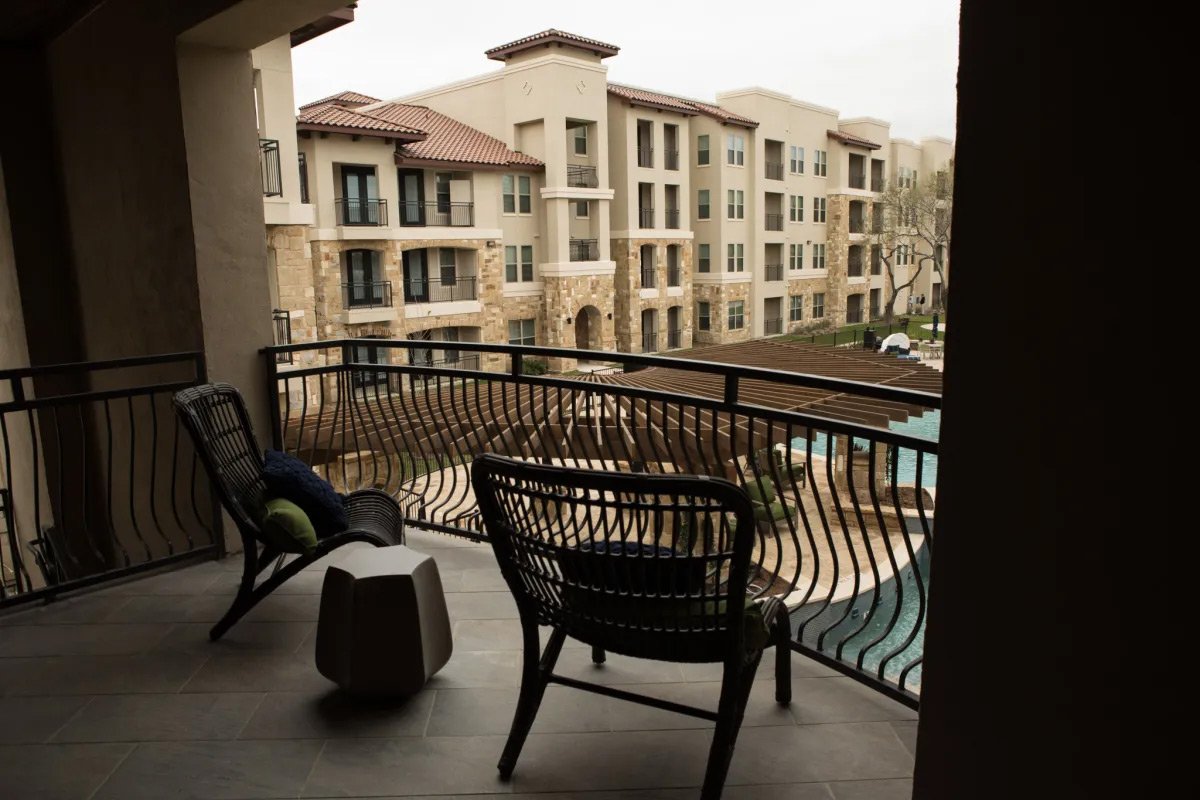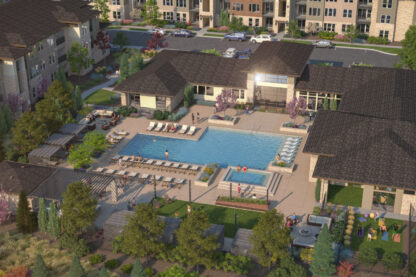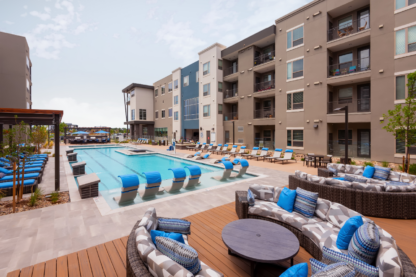San Antonio Report | Shari Biediger
In two very different settings on either end of the urban core are new multifamily developments that both stand in the place of former blight and decay along rapidly growing parts of the San Antonio River.
The Mission Escondida Luxury Apartments (MELA), at 1515 Mission Rd., are only a few minutes’ drive from the center city and sit along a quiet section of the Mission Reach of the river. Southline, at 226 Newell Ave., extends the footprint of the bustling Pearl campus closer to the Museum Reach and a busy highway.
Though both boast a similar list of amenities and floor plans intended to attract young professionals, they share another common trait: MELA is situated on land once occupied by a decaying trailer park while Southline replaced old buildings and a storage yard belonging to Texas Towing.
Both developments also began leasing in October and new residents are settling in – 15 at MELA last Saturday alone, and Southline is already 31 percent leased. Both are managed by Embrey Partners.
The Rivard Report recently toured each site to get an inside look at how the highly anticipated residential communities have taken shape.
Mission Reach: MELA
The word escondida means “hidden” in Spanish, and when White-Conlee Development partner Scott Weems first stood on a footbridge and saw the land across Mission Road from the Riverside Golf Course, he thought it was a peaceful and beautiful setting. “But people didn’t know it was here,” he said.
Soon, they did, as controversy embroiled the project. The land was occupied by residents of the Mission Trails mobile home park. Though neglected and decrepit by most accounts, with living conditions so deplorable the residents sued the owners, the trailer park community became a symbol of the toll of neighborhood gentrification.
In 2014, White-Conlee acquired the land for $4 million, and spent another $1 million relocating the residents to other trailer parks on the South Side, then demolished the abandoned and burned-out trailers, and prepped the site for construction.
After a long and contentious process to rezone the area and gain conceptual design approval, construction on MELA began in summer 2017. “It’s been a challenging development, but it’s also been very rewarding,” Weems said.
The first of five buildings was completed in December. Weems said the final structure in the complex is expected to be finished in May, bringing online a total of 360 studio, one-bedroom, and two-bedroom apartments. So far, MELA is 9 percent pre-leased and 2 percent occupied.
The units range from $999 to almost $2,000 for the base monthly rent, priced according to the location within the complex and views of downtown from the windows and balconies. There are no subsidized or low-income units.
The median gross rent in San Antonio, which includes rent and utilities, is $958, according to census data. The listing service RentCafe reports the average rent for an apartment in San Antonio, which has increased 2 percent since 2018, is $1,039. But the majority of apartment rentals are priced between $701 and $1,000.
The MELA clubroom – a space with soaring ceilings, modern furnishings, a business center, and fitness center – is open and ready for resident use. Upstairs, a demonstration kitchen provides space for events and meetings, and patios equipped with widescreen TVs overlook a 500,000-gallon pool that is situated at the heart of the complex.
Other amenities include an onsite dog daycare operated by Pawderosa Ranch, bike storage and free bike rental, a game room, and access to the trails of the Mission Reach. White-Conlee donated acreage to the San Antonio River Authority for a linear park near the development that provides public access to the river.
MELA is being marketed to downtown workers, service members based at JBSA Lackland and Fort Sam Houston, and to those drawn to the Mission Reach trails. Weems, an avid cyclist who is renting a two-bedroom unit for that reason, also thinks Escondida will also appeal to those who have roots on the South Side.
While the typical goal of this multifamily developer is to sell the property to an investor within a year or two, Weems said White-Conlee will keep MELA in its portfolio for longer than that. With another six-acre plot of land adjacent to the apartments yet to be developed, the group may move on to that yet-to-be-determined project next.
Museum Reach: Southline
Southline is the newest multifamily residential development at the Pearl, and much about the four-story community, from the repurposed storage tanks to the library barn door, came from the historic brewery.
“The whole idea of the property is to look like an old mercantile building turned multifamily living, so a wealth of original pieces [from the brewery] were used to create that feeling,” said Katie Ellis, Southline community manager.
Adjacent the Museum Reach of the River Walk on the southern end of the Pearl, Southline is situated on a strip of land once occupied by Texas Towing and near the site of the seedy former Fox Motel. Construction began in 2016.
Most of the 223 units at Southline are one-bedroom apartments and 30 percent are two-bedroom floor plans, all with 10-foot ceilings, designer kitchens, and custom built-ins. Many of the balconies overlook the River Walk and the fiberglass F.I.S.H. installation beneath a highway bridge.
The rent varies according to unit size, the interior finishes, and location within the development, and range between $1,480 and $2,800 a month.
“At Pearl, we’re very pleased to have Southline because it fills a niche between the Can Plant on one end and the more exclusive and expansive Cellars at the other end of the spectrum,” said Lewis Westerman, senior director of real estate at Silver Ventures, the group behind the Pearl. Embrey Partners also manages the Can Plant and Cellars.
Community amenities at Southline include a pool with private cabanas, library, a culinary café and lounge, fitness center and a fitness lawn, dog park, private River Walk access, and bike storage. Parking is provided in the basement level.
Preleasing and move-ins began in October, and the development is currently 17 percent occupied.




